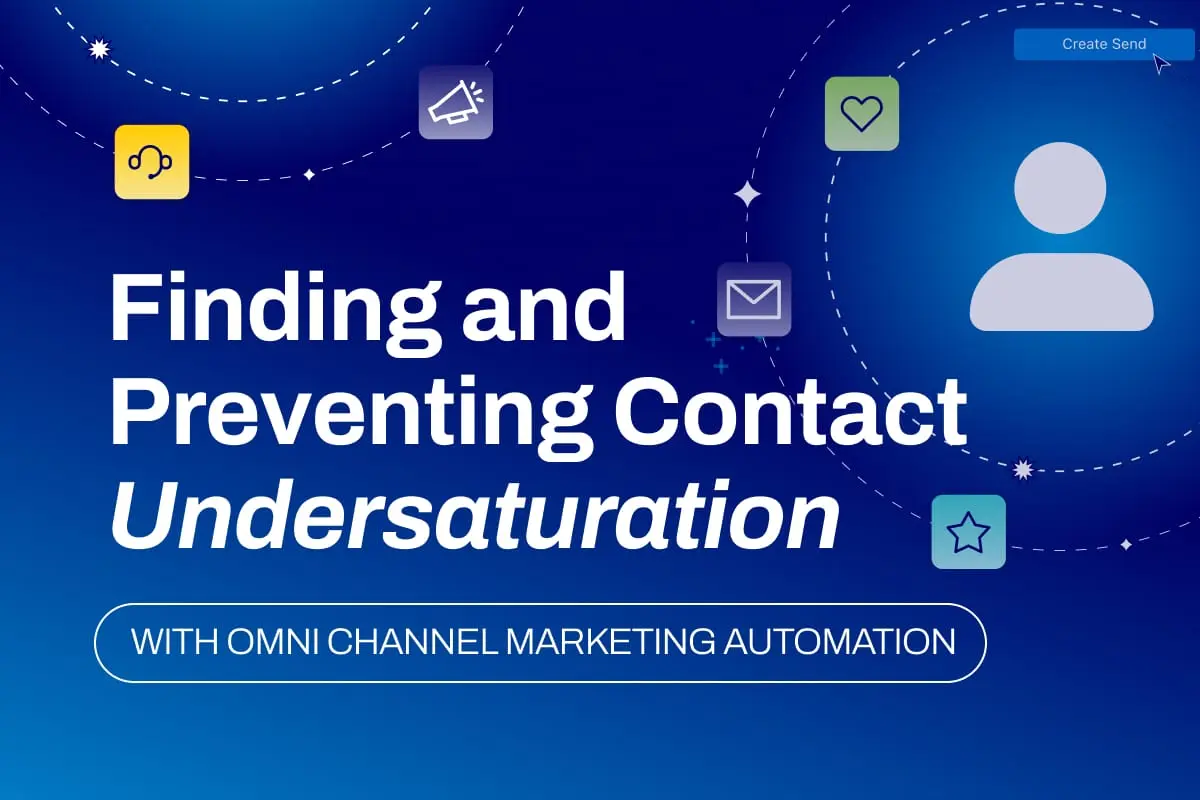
Contact Undersaturation & Omni Channel Marketing Automation
49 percent of consumers receive what they call either an annoying amount of emails, and that’s easier to find in unsubscribe and spam complaint rates, but how do you address underwhelming your audiences?
Effective customer communication is crucial for businesses seeking to establish a meaningful connection and foster lasting relationships, and amid today’s myriad touchpoints, brands often rely on omni channel marketing automation to provide a holistic view of all marketing channels from a single source.
However, a company may find that subscribers aren’t always getting the full value of this outreach, despite embracing modern tactics. This leads to a loss in revenue and brand awareness, among other factors. It is thus critical to understand how to identify and prevent an underrated problem – contact undersaturation.
The Cost of Undersaturation
When an omni channel marketing automation strategy isn’t working as intended, customers aren’t going to get the most out of your messaging. Consumers typically face one of two consequences: either messages come at such a high frequency that they become overwhelming, or at a frequency too low, known as undersaturation.
A company will usually notice the effects of undersaturation in the form of:
- Decreased brand awareness
- Reduced conversion rates
- Lower customer retention rates and lost loyalty
- Diminishing sales and lost opportunities
Undersaturation signals that there is scope for a company to do more.
How to Measure Saturation
An omni channel marketing automation strategy requires constant review to ensure that a team isn’t investing too much time and resources into an ineffective plan. Here are some tips on how you can measure saturation:
Finding From Scratch
If you’re working with a new audience or are at a new company, and you aren’t sure of the correct frequency to achieve the ideal saturation, begin with these strategies.
- Audience Segmentation: Create multiple options for messaging frequency when subscribers opt-in. Divide your audience into segments based on these and tailor your communication strategy to each group’s preferences and behaviors.
- Test and Analyze: Regularly analyze engagement metrics over time to gauge the effectiveness of your communication strategy. Experiment with different frequencies and content types to find what resonates best.
- Seek Feedback: Encourage customer feedback to understand their preferences. Use surveys, polls, and social media interactions to gain insights and refine your approach.
Establishing a Timeframe
DESelect research indicates consumers define “too many” marketing emails from a single brand as 5 per week, but what about across your entire omni channel strategy?
There are many ways to determine this, but first, select a time period that you would like to review – biweekly, monthly, quarterly, etc. Once you’ve defined a set period, it is easier to collect data with the following tools.
- Explicit market research, customer surveys, and engagement analytics that reflect data on when and how often they prefer to receive communications
- Historical data on how past campaigns have fared, and best practices you’ve picked up along your career
- A/B testing to see when subscribers start to lose interest in journeys
- Beyond these, behavioral data is a good indicator of unique factors, such as when seasonality plays a role in additional interest or a drop-off in engagement that would affect the optimal cadence
Factoring in Engagement
With this data in hand, analyze the engagement that your omni channel marketing automation strategy has generated. For instance:
- How many customers click on links they are sent?
- How many visits do you get on your website as a direct result of your strategy?
- On which channel(s) do you find the most engagement on your messages?
- At what number of messages do you see engagement drop off?
- What is the ratio of messages sent to conversions?
- How much can be attributed to supplemental factors, such as content, subject lines, or timing?
Categorizing the Results
With an automated omni channel marketing strategy, brands get access to segmented data and the performance of each channel.
This categorization of results also allows a more macro view of your customers’ demographics, as well as the content you deliver and the platforms you deliver it on.
Using this information, you can measure saturation levels to determine which oversaturated subscribers need minor communications delayed and which undersaturated subscribers may need to be added to additional campaigns.
Preventing Undersaturation
In order to ensure that an omni channel marketing automation strategy has the desired effect, it’s essential for teams to identify what platforms their customers are most likely to frequent and how to deliver relevant content to them. Using this information, a company can track its customers’ journeys and identify gaps in communication.
At the end of the day, the best way to prevent contact undersaturation is when a brand gets the most out of all available channels through combining a robust omni channel marketing automation strategy with relevant and unique messages.
Manually, this process is time-consuming and difficult to fully track, but DESelect Engage allows marketers to monitor and properly saturate audiences based on custom-built rules and campaign prioritization.
Learn how Engage optimizes omni channel messaging to maximize each subscriber’s lifetime value.









